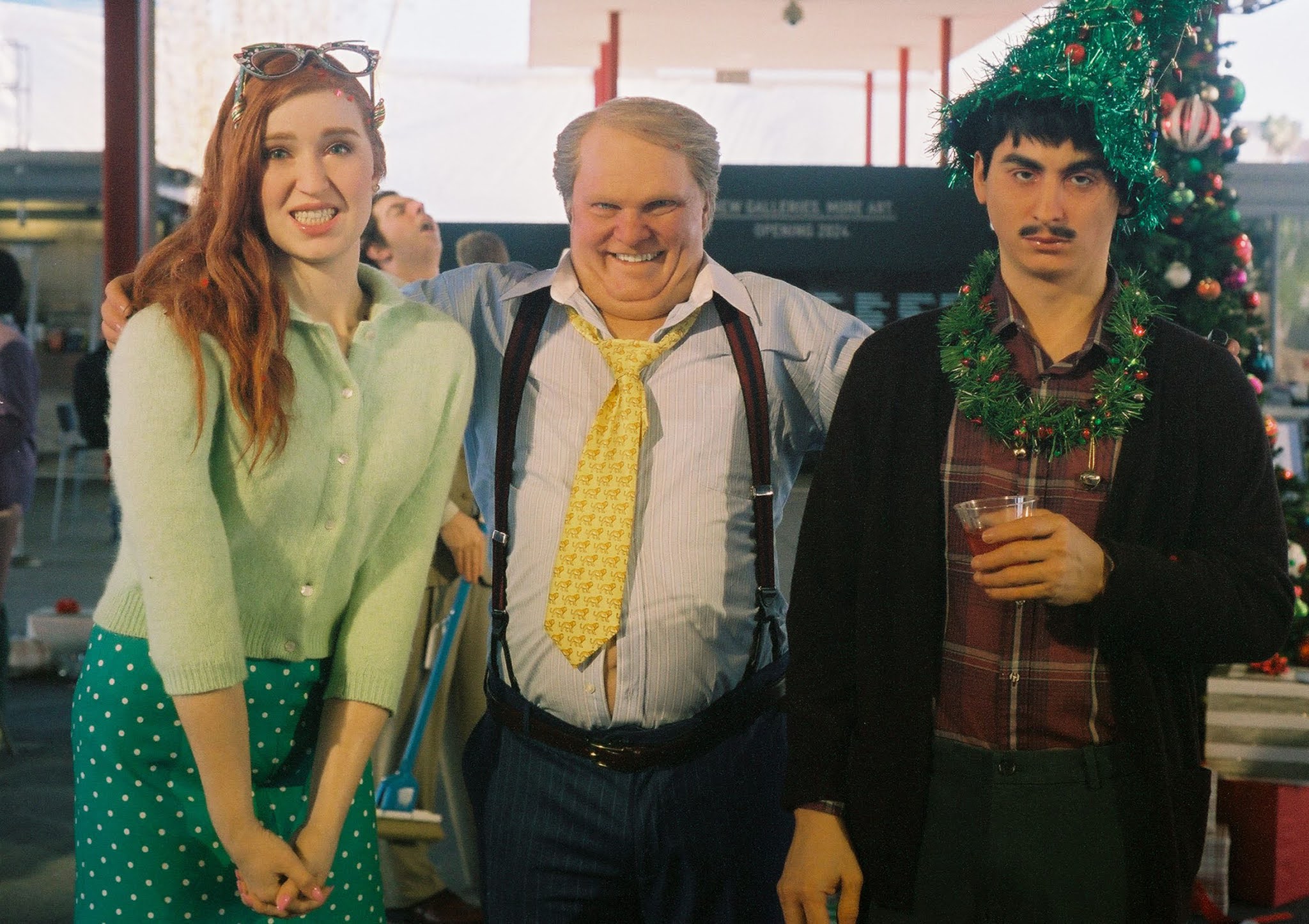Groundhog Day
"In the popular imagination, Los Angeles is the city of dreams, but its utopian promise—of eternal sunshine and blissful deliverance from life’s indignities—is often pulsing with the nightmare opposite."
—The New Yorker, Aug. 12, 2020
"'Do you think you could live here?' It is a question repeatedly heard asked in Los Angeles for the second West Coast edition of Frieze Art Fair, always by a New York- or London-based dealer, adviser, curator, etc. It is no secret that the siren call of California sun in mid-February has anyone working in cooler climes reconsidering their life choices. But underlying the seemingly innocuous question at this year’s Frieze is a much larger one: does LA have what it takes to become the art trade’s next big hub?"
—The Art Newspaper, Feb. 14, 2020
"Los Angeles has long had a problem balancing nature and culture. Historically, nature has been the city's main attraction: the sun, the sea, the palms, the tans… How will all this art and culture affect the lifeguards on 'Baywatch'?"
—Herbert Muschamp in the New York Times, Dec. 1, 1997
"There is nowhere to learn about art except superficially in this town."
—Peter Schjeldahl in the Village Voice, June 3-9, 1981
"In a burst of civic euphoria tinged with skepticism, the slowly maturing metropolis of Los Angeles seems about to take a great leap forward as a center for contemporary art."
—Grace Glueck in the New York Times, Nov. 23, 1986
"The most impressive thing about the Los Angeles County Museum of Art may be that it exists at all. Interest in art in Los Angeles is a postwar phenomenon that gathered real momentum only about ten years ago."
—The New York Times, 1965
 |
| LACMA, 1965. Ralph Crane photo |


Comments
Regardless, if LACMA's guardians and caretakers back then could only see what has happened to LA's supposedly publicly-run and publicly-owned (at least quasi) art museum in 2021, they'd probably start spinning in their graves.
The museum admittedly started off shaky and rocky, finally began coming into its own during the past few decades, and now is back to being shaky and rocky all over again.
Talk about Groundhog Day.
Michael Marie-Antoinette Govan has done quite a number on it.
"The L.A. County Museum of Art, a finned fantasy with boardroom chichi interiors, designed by William Pereira, and the Pasadena Art Museum, with its ribboned antiseptic caverns, designed by Thornton Ladd and John Kelsey, are as monumentally vacuous in spirit as they are in ideas. The general inhospitality of the buildings to art acted immeasurably to depress the local art audience. So much was promised, so much was planned for the future, so much money was given in good faith, and when the dreams were finally delivered, the sheer obtuseness of the architecture strangled hope at birth.
Ed Ruscha’s painting The L.A. County Museum on Fire might be taken as a symbol of the art community’s bitter disillusionment and frustration when faced with this fatuous [Pereira] building which betrayed the lack of insight and taste of the LACMA trustees who control so much of the future of art in Southern California."
--- John Coplans, ArtForum (February 1975)
In large part, it explains the negative reaction to the Zumthor building and Govan's administration.
New Yorkers benefit greatly from the writing of critics like Schjeldahl. LA has no one who compares.
The New York cultural scene also benefits greatly from the infusion of cultural capital it gets from Yale, Princeton, Columbia, and even Harvard. The colleges here don't train their grads to be art connoisseurs.
Today, LA is arguably a better place to make art than New York, but it is not a better place to consume art.
That’s a deflection from the legitimate criticisms of Zumthors building. It wasn’t about “art” or Zumthor’s legacy. It was always about real concerns such as the extraordinary budget, the needs of the city, the shrinking of the new building, and the obliteration of curatorial divisions in order to accomodate the design; divisions that are often championed by, yes, east coast colleges like Yale, Princeton and Columbia, and whose grads by the way, aren’t exclusive to NYC, but disperse around most of the country after graduation.
And if the city benefited from this more so than LA, NYC certainly should have better new architecture than what it currently has and keeps building without much discourse.